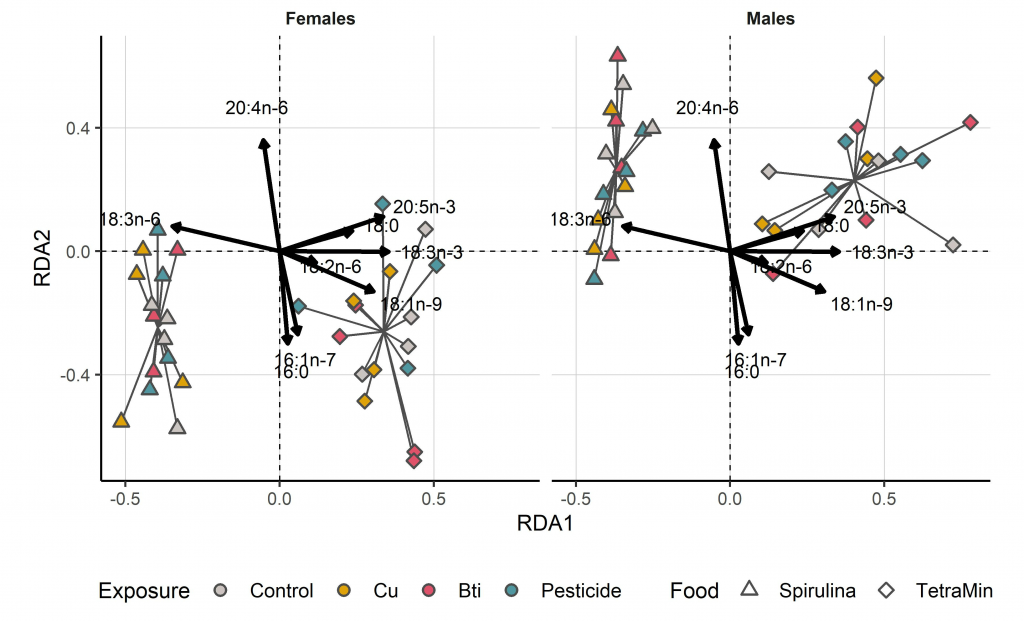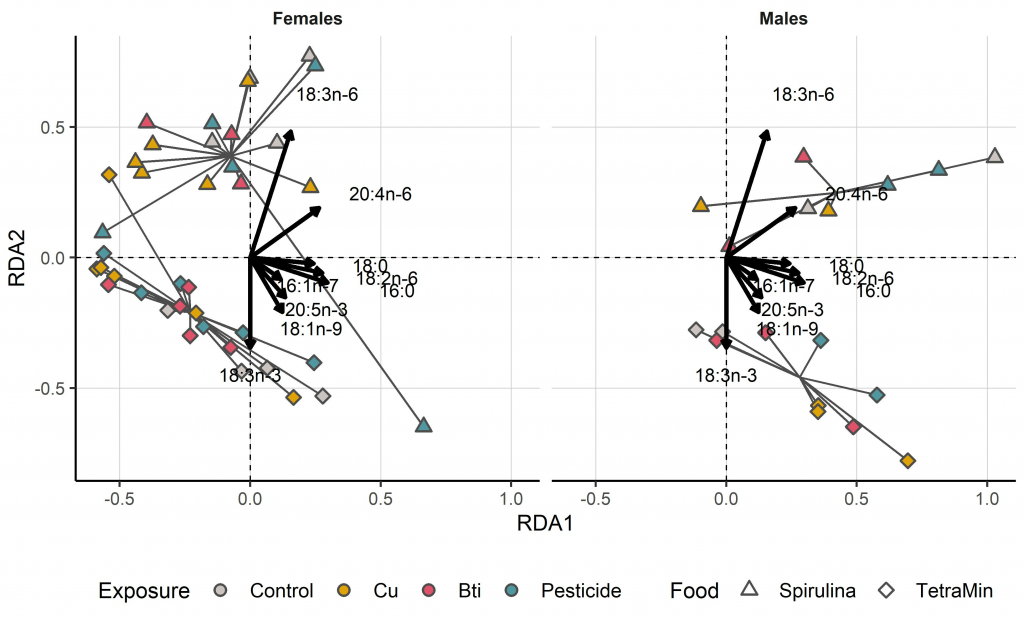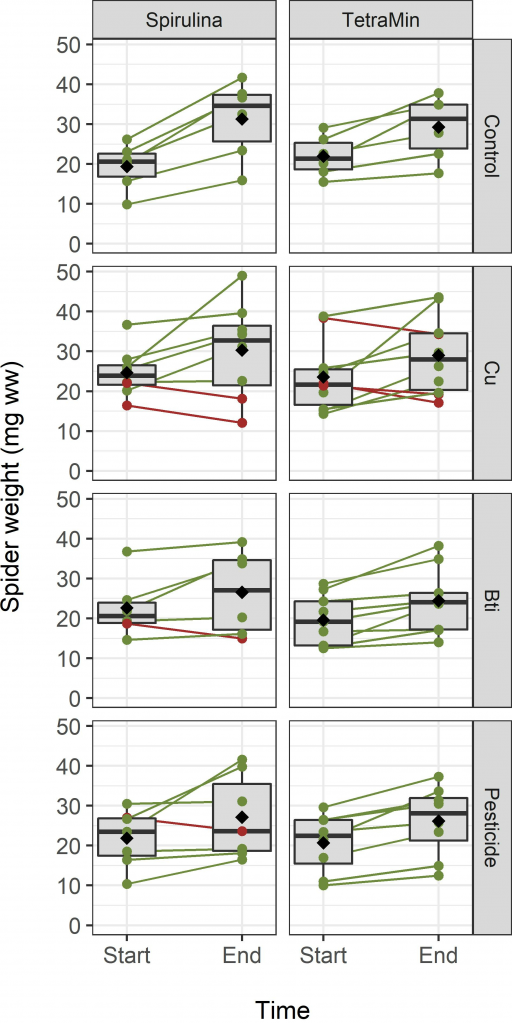Anthropogenic stressors have a significant impact on the delicate balance of ecosystems such as emergence of aquatic insects, connecting aquatic and terrestrial food webs. These insects act as a high-quality food source for terrestrial consumers, such as spiders. In this blogpost, Sebastian Pietz talks about his latest publication on exploring the potential effects of subsidy quality on spiders.
Investigating Subsidy Quality
We used a model food chain to investigate the effects of aquatic subsidy quality on riparian web-building spiders. For this, Tetragnathaspp. spiders were exclusively fed with emergent midges of the species Chironomus riparius. While some midge larvae were cultured in the absence of any stressor, others were exposed to copper (Cu), Bacillus thuringiensisvar.israelensis (Bti), or a mixture of synthetic pesticides. Additionally, two different basal resources, Spirulina and TetraMin®, were used, which differed in terms of fatty acid (FA) composition.
Results
We found that the basal resources (Spirulina and TetraMin®) played a significant role in shaping the fatty acid profile of emergent chironomids. RDA1 reflected differences in the fatty acids of adult chironomids when larvae were fed with Spirulina or TetraMin®(Figure 1). However, the impact of basal resources on the spiders’ fatty acid profile decreased, as reflected by their separation along the second RDA axis (Figure 2). This is possibly related to the ability of both chironomids and spiders to modify fatty acids. In contrast, the presence of aquatic contaminants had negligible effects on the fatty acid profiles of chironomids but caused a substantial reduction (around 30%) in the content of vital polyunsaturated fatty acids, such as 20:4n-6 (arachidonic acid) and 20:5n-3 (eicosapentaenoic acid), in the spiders of the Cu and Bti treatments. This decline in essential fatty acids likely contributed to a statistically significant decrease (40%-50%) in spider growth, while this effect size was subject to considerable variation (Figure 3).



Implications for Terrestrial Food Webs
The observed effects on spider physiology are likely related to differences in the nutritional quality of their prey, thus emphasizing the importance of a high-quality subsidy for their growth and development. Hence, aquatic contaminants can have far-reaching implications for riparian spiders, potentially disrupting terrestrial food webs. Further analysis of additional parameters, such as proteins, carbohydrates, and the retention of contaminants, may provide a deeper understanding of the underlying mechanisms.
Conclusion
By altering the quality of the subsidy provided by aquatic insects, aquatic contaminants can disrupt the physiology of riparian spiders, leading to a decline in their growth. These findings emphasize the importance of considering ecosystem interactions and the need for sustainable management practices to mitigate the detrimental effects of anthropogenic stressors on the total natural environment.
The paper “Subsidy Quality Affects Common Riparian Web-Building Spiders: Consequences of Aquatic Contamination and Food Resource” was authored by Sebastian Pietz, Sara Kolbenschlag, Nina Röder, Alexis P. Roodt, Zacharias Steinmetz, Alessandro Manfrin, Klaus Schwenk, Ralf Schulz, Ralf B. Schäfer, Jochen P. Zubrod, Mirco Bundschuh and published in Environmental Toxicology and Chemistry.
